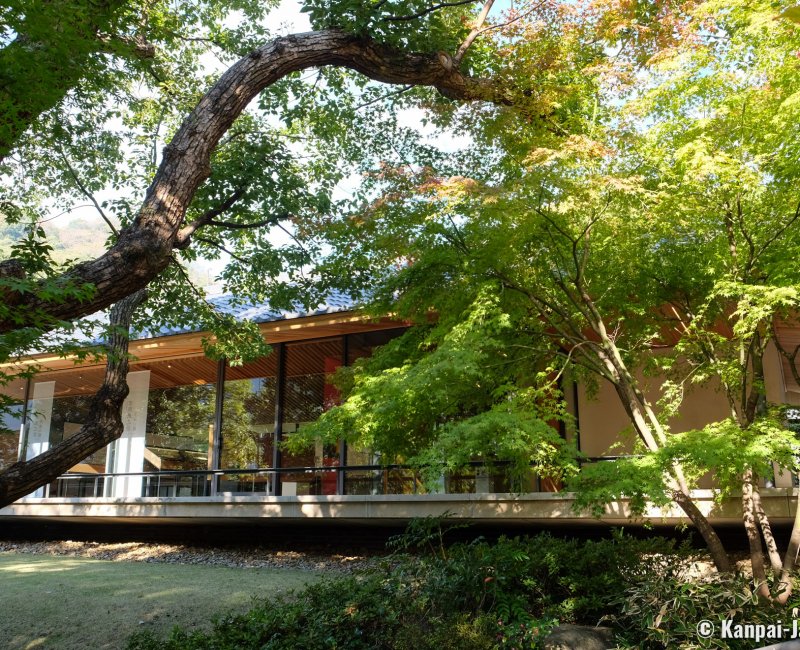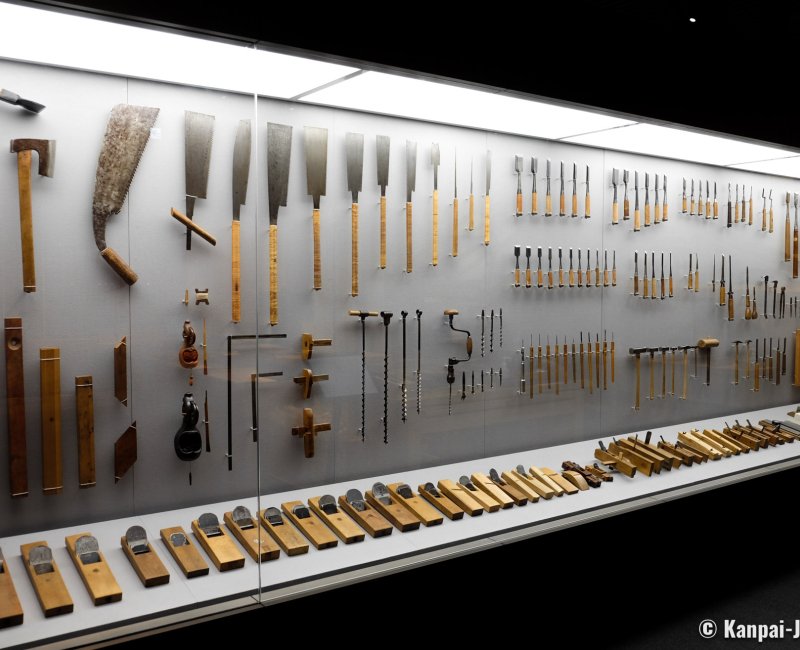Takenaka Carpentry Tools Museum
The History of Traditional Wooden Architecture in Japan
Takenaka Carpentry Tools Museum is located at the foot of Mount Rokko in Kobe, in Hyogo prefecture. Staged inside a very beautiful building, the exhibition unveils the Japanese carpentry’s complexity hidden behind the apparent simplicity of traditional wood constructions in the archipelago.
Japanese carpenters have used wood as the base and raw material to build shrines, temples and traditional houses for centuries.
Most of Buddhist temples and Shinto shrines usually display the same layout for their cult pavilions throughout Japan, however very notable differences appear in the details of the constructions. These buildings’ architectural styles reflect the craftsmen's skills in their specific times. The history of the traditional Japanese architecture and wood carpentry is elegantly recalled with great pedagogy by the Takenaka Carpentry Tools Museum in Kobe.

Beautiful exhibition setting
Since 2014, the museum is sheltered in a building standing at the very location of the former residence of the Takenaka family, and shows a wonderful sample of Japanese architecture, with:
- Traditional aspects, especially with a small tea house in the garden; and,
- Contemporary traits, such as large bay windows and a central lightwell to provide a natural lighting inside.
A sense of volume is provided through the distinct spaces, that are not enclosed, and it is easy to navigate through the floors without being lost. One can also detail a roof made of an imbrication of beams, only supported by four steel pillars placed outside the French windows. Likewise, the display includes traditional earth walls whose materials were worked so as to give an interesting decorative texture. Like the constructions it displays, the museum has a simple and refined design highlighting the raw materials and the resourcefulness in their use.

Progress of wood carpentry through the ages
Reconstitutions and documentary videos, available in English, show the progresses and development of tools used by Japanese carpenters over time. From the stone ax to cut timbers to the intricate cutting of the beams, the necessary tools to build wooden temples and shrines are displayed according to their historical periods. The Edo period (1603 - 1868) is particularly flourishing and news tools were imagined to work the wood, allowing sculptors-carpenters to make monumental pieces of high fineness. All wood joints replaced the metallic ones and show the Japanese carpenters’ high level of craftsmanship.
Two of the displayed works are particularly fascinating:
- The faithful reproduction of a traditional sukiya teahouse, where one can see the precision of the perfect jointing necessary to put together the wooden structure, which is entirely made of log pillars and beams, as well as fine walls built from an intertwining of wood strips and covered with mud.
- A delicate sculpted panel in the Kumiko artistic technique, using several tree species to vary the colors. A long-winded work, the putting up together of the various elements creates a typically Japanese landscape alluding to the seasons.

The museum also stages temporary exhibitions and organizes woodworking workshops, aimed at children as well as professional woodworkers.
We highly recommend the visit of the very beautiful Takenaka Museum, that shows how carpenters learned to make the most, technically and aesthetically from the various tree species, as well as the influences between the tools developed and the evolution of the traditional Japanese architecture.

